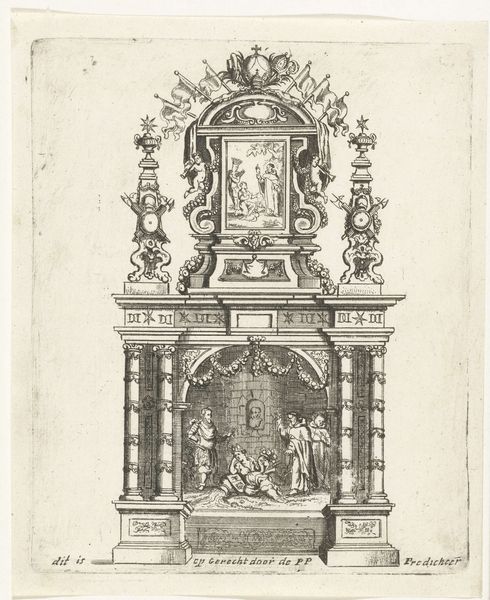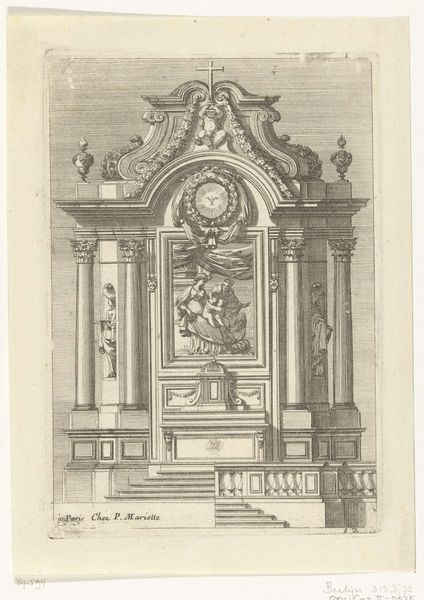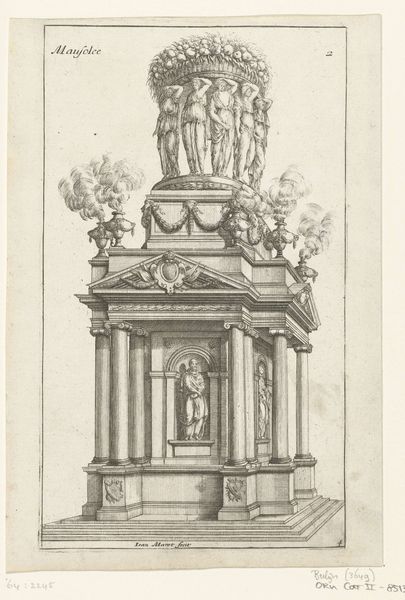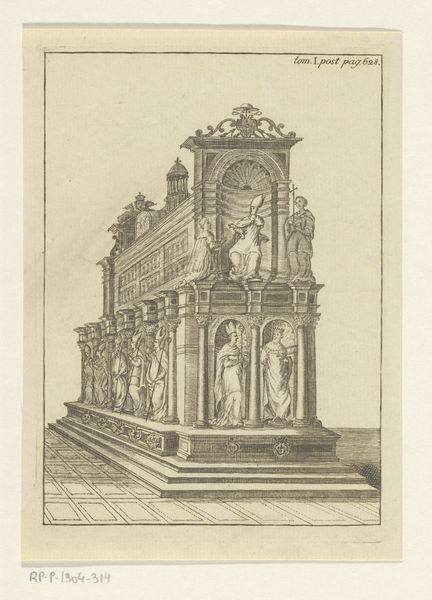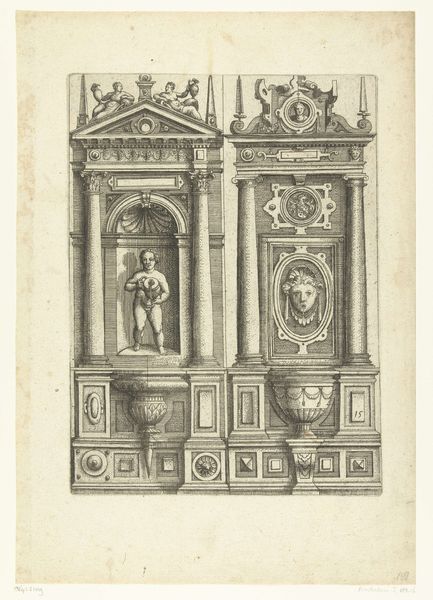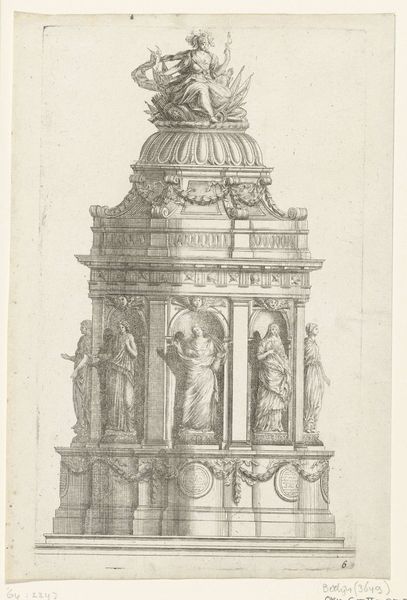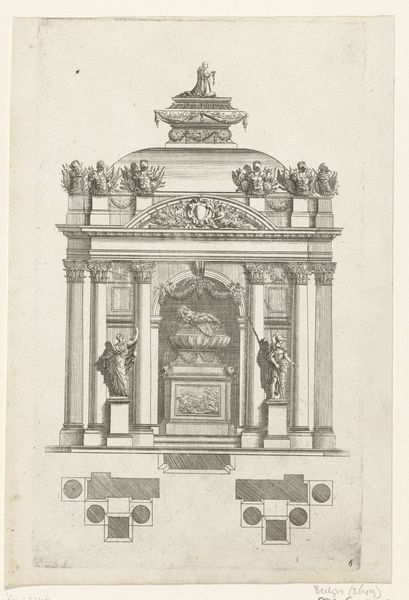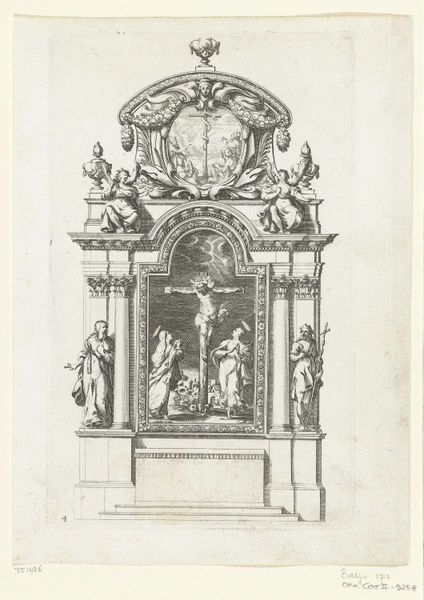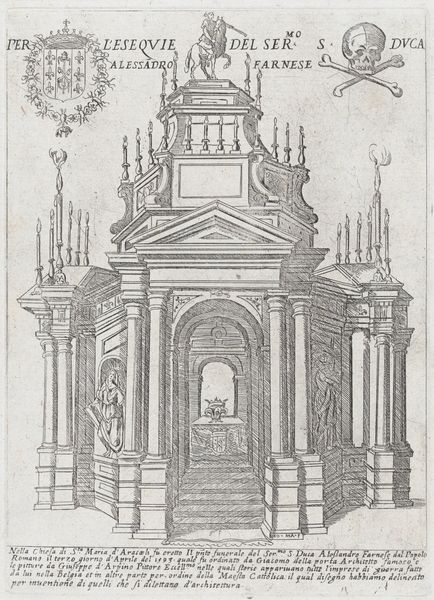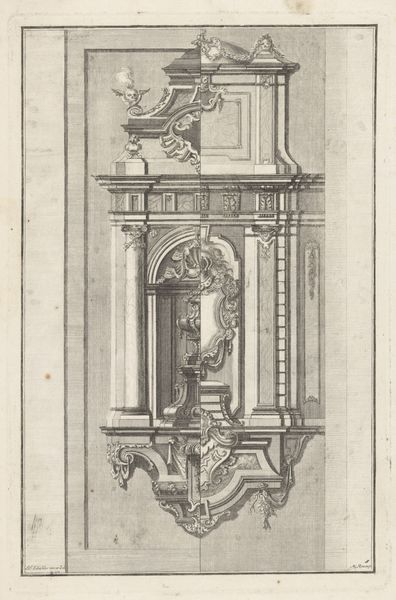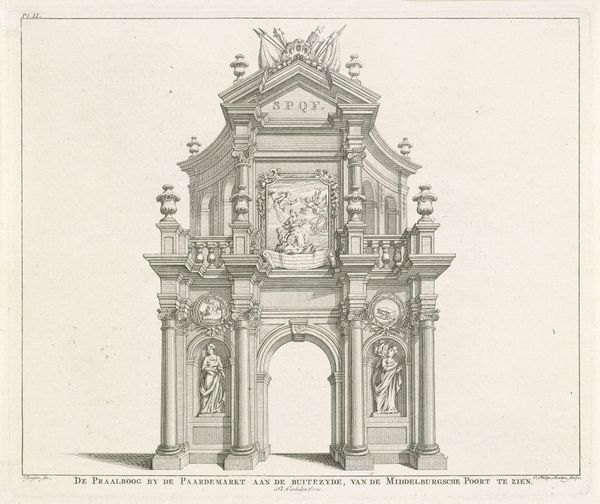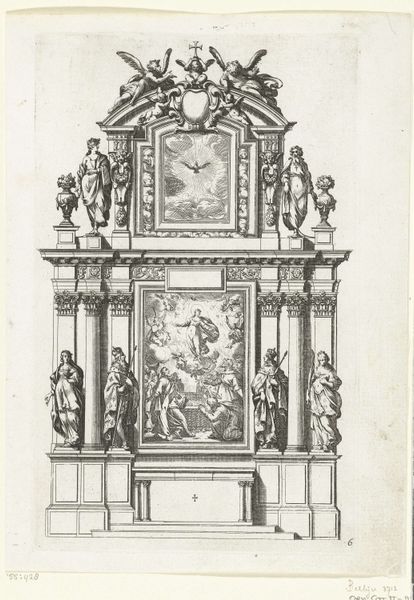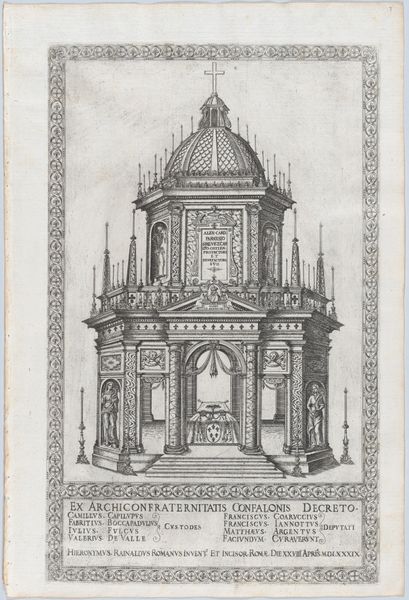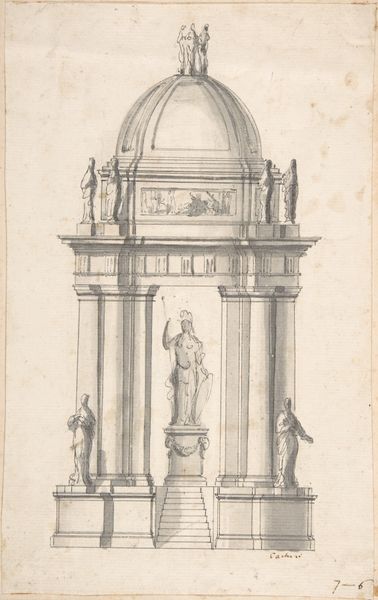
graphic-art, engraving, architecture
#
graphic-art
#
baroque
#
old engraving style
#
engraving
#
architecture
Dimensions: height 194 mm, width 134 mm
Copyright: Rijks Museum: Open Domain
Curator: Before us, we have “Doodskist op hoog voetstuk”, dating roughly from 1629 to 1716. The piece, crafted by Jean (I) Marot, employs the precision of engraving as its medium, presenting us with a captivating glimpse into Baroque aesthetics. What strikes you initially about this architectural depiction? Editor: A profound sense of structured grief, perhaps? The monumentality of it speaks volumes. The stark contrast between the light and shadow of the engraving also imbues the scene with solemnity. It feels like a very public declaration of mourning. Curator: Precisely. Baroque art often served such demonstrative purposes. Think of the elaborate displays surrounding royal funerals and state events. This engraving likely served to commemorate someone of high social standing. It illustrates the spectacle and public performance linked to displays of power. Note the strategic display of heraldry. Editor: Yes, the heraldry is significant, almost as though claiming lineage ensures remembrance. And the sculptural figures interspersed around the central coffin or urn—do they represent virtues or perhaps deceased family members immortalized in stone? Curator: That is the central iconographic question, isn’t it? Statues were strategically placed to reflect power. One could investigate these figures based on gesture and accoutrements as a cultural and iconographic practice. Given its purpose as a memorial, it’s plausible that it incorporates classical or Christian virtues deemed fitting to the deceased. The composition is key to unlocking the visual code. Editor: Thinking about the original setting this image belonged to – perhaps a book of prints, for architects or patrons? How might the interpretation shift depending on how widely circulated this particular print would have been, or perhaps depending on where the architectural ideas expressed here were eventually adapted in actual physical structures. Curator: Absolutely. Its reception would have differed based on the context. For the elite, it could have been an aspirational model for their own memorials. But beyond those in privileged circles, its wider impact introduces how ideas are spread, absorbed, and occasionally reconfigured depending on various social influences and local conditions. The art of symbolic remembrance is a persistent aspect of culture, and often deeply woven into societal power structures. Editor: Seeing the engraving anew through this lens reveals it to be much more than a picture of architectural grandeur; it is the very record of symbolic intent, of societal values carved meticulously on paper. Thank you for that enriching dive!
Comments
No comments
Be the first to comment and join the conversation on the ultimate creative platform.
